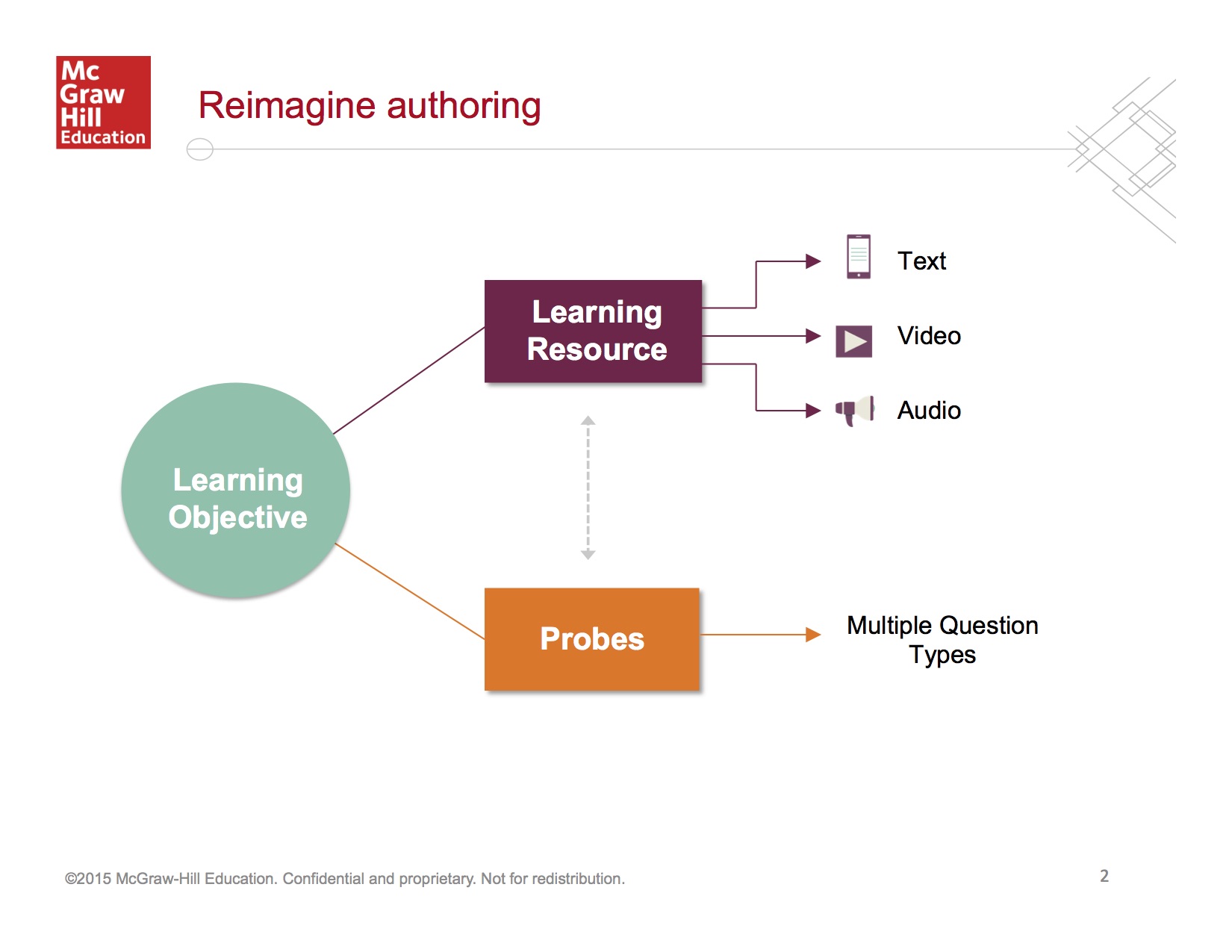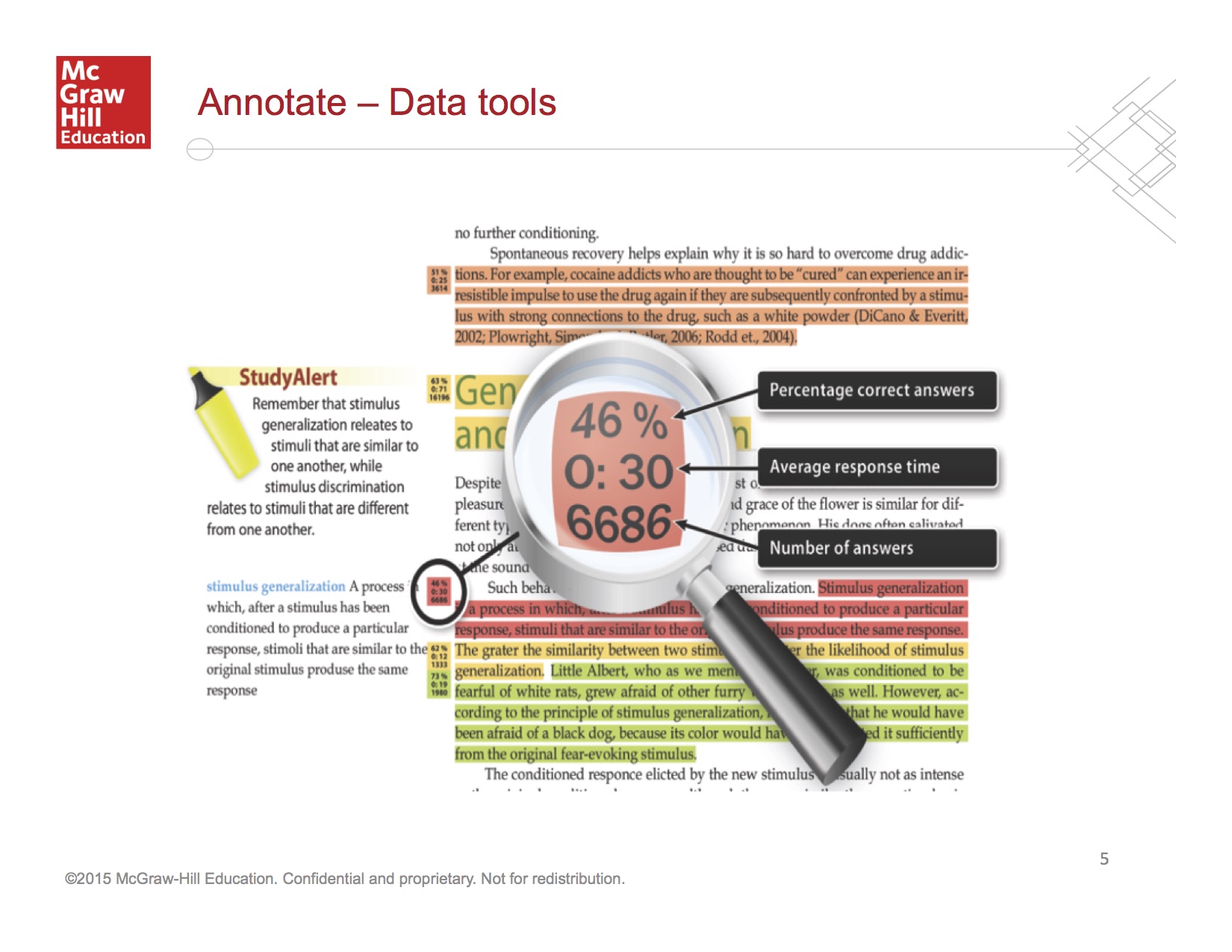In what has to be the softest launch ever, McGraw Hill has been quietly talking about their new personalized learning authoring system. If you ask them when it will be available to all customers, they will tell you “right now.” But since it doesn’t even have a name yet, I’m not sure how customers would ask for it. They occasionally refer to it as their “learning science platform,” but that’s not really its name.
Here’s a dirty little secret: The “new” authoring platform is essentially a publishing front end for their SmartBooks platform. Not only is it interesting in and of itself; it also gives us some indication of one direction that the textbook publishing industry could go. (By the way, they don’t like to be called “textbook publishers” anymore. I guess the industry needs to come up with a new name for that too.)
I was able to get a quick overview of the platform from McGraw Hill’s Chief Digital Officer Stephen Laster and SVP Zach Posner.
SmartBooks are…uh…smart books
SmartBooks are based on a technology developed by a company called Area9, which was acquired by McGraw Hill in 2014 (although the company used the technology in products for several years before then and purchased a twenty percent equity stake in 2013). The heart of the platform is a set of algorithms designed to optimize the commitment of knowledge to long-term memory. It turns out that you can boost memorization with tricks like reminder quizzes at carefully timed intervals. If you combine this with algorithms designed to test for understanding by weighing the degree of difficulty of the question (like Item Response Theory), you can come up with a very good “drill and kill” platform that can help students learn and remember just about any term, fact, or concept that a computer can test for. The first product that McGraw Hill built with Area9 technology, LearnSmart, is just that. It’s a good drill and kill tool.
The next thing that the company did was integrate the LearnSmart technology into an eBook platform. With SmartBooks, students can see the important content highlighted, get targeted practice questions designed to test their knowledge of the content, and then get feedback what they’ve learned and what they still have yet to master. The way these pieces get integrated is nicely done. Here’s an overview of the student experience:
https://youtu.be/auaHNO9A2Es
On one level, SmartBooks don’t enable students to do anything that a textbook doesn’t. It just enables them to do the same things better. You probably wouldn’t expect a textbook to impart deep and nuanced understanding of…well…anything. SmartBooks won’t either. But they should do the workhorse job of getting students to learn basic terms and concepts.
TurnSmart
It turns out that, from a corporate change management perspective, SmartBooks were a stroke of genius. Textbook publishers share a common problem that most of their editors don’t know how to design digital products. And why would they? Most of them spent their careers learning the craft of designing paper books. This is one major reason why digital products from textbook publishers are often simultaneously very bad and slow to come out in volume.1 It turns out that SmartBooks are a great solution to this problem because they don’t demand a lot from editors that they don’t already know. They already know about content (or “learning resources”) tied to assessment items (or “probes”). They know about linking these to learning objectives and tying them to larger units in a table of contents. That’s all they need to know in order to author a SmartBook.

McGraw Hill editors could plan their titles more or less the way they always have, with some minor format modifications to make sure that they have the right structure. Those books could then be “wired up” to become SmartBooks without really having to redesign the product. The authoring platform does what you would expect it to do; allow authors to highlight sections of text and link them to assessment questions and learning objectives. There’s more functionality—for example, you can tag questions with difficulty level and Bloom’s Taxonomy level—but that’s the heart of authoring. Then there is what amounts to a validation and tuning loop, where authors can see how students are doing with the content in order to improve it.

This authoring platform is essentially what McGraw Hill is releasing as its yet-to-be-named product. You can now buy a SmartBook without the book.
Smart.
It’s not the size of the data, but the magic in it

It may not seem like it, but by making this move, McGraw Hill is also making a bet on one possible future for personalized learning products. Specifically, they are making a bet against the software as a replacement for the teacher and against big data. As long as the content in SmartBooks is locked down, then it is possible to run machine learning algorithms against the clicks of millions of students using that content. To the degree that the platform is opened up for custom, newly created books, the controlled experiment goes away and the possibility of big data analysis goes with it.
The company is clearly not stumbling into this position blindly but rather taking it consciously. Last year at the Campus Technology conference, Laster told the attendees, “Here’s my thinking about big data—I don’t know what to do with it in education. I’d like to get us away from the term ‘big data.'” He talked instead about the value of “small data.” This is essentially the same position that Mike Caulfield advocated two years ago in his post on the absence of theory in big data talk. Laster underscored this position in his recent conversation with me, claiming that Phil’s and my position that personalized learning requires skilled teachers is basically McGraw Hill’s position and taking a swipe at Knewton by saying, “We don’t believe in mechanical Turks in the sky.” He made a point of calling out that all analytics information from content in the new platform will be available via Caliper and said, “You own your data.” (I will investigate the details on this, including the relevant contractual clauses, when I get the chance.) Support for Creative Commons licenses is planned for a future release. All content, including the metadata links created in the authoring platform, is exportable into an XML manifest.
There’s a lot here that I still don’t know, but what I’ve seen and heard so far is intriguing. And it definitely begins to clarify the battle lines for the next generation of personalized learning products.
- I could write a book on this subject alone. [↩]
[…] Michael Feldstein looks at McGraw-Hill’s new “personalized learning authoring product.” […]